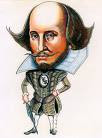It seems that the thread of avian metaphors in Mrs. Dalloway is almost as pervasive as the appearance and description of flowers.
Because there were so many references to birds, I decided to only note the passages in which birds were deliberately mentioned or a character was described as bird-like.
Page 4 - Clarissa as a jay
Page 10- Clarissa's face being described as "beaked"
Page 14 - Septimus is "beak-nosed"
Page 35 - Sally as a flying bird
Page 43 - Clarissa as a "fluttering" bird
Page 56 -Peter sinking into the "plumes and feathers of sleep"
Page 82 - Septimus watching Lucrezia "as one watches a bird"
Page 102 - Sir William as a bird of prey
Page 145 - The screen in Septimus' room with birds on it
Page 146 - Septimus being described as a young hawk
Page 147 - Lucrezia's mind falling from branch to branch, like a bird
Page 148 - I'm a little confused - is Lucrezia referring to Septimus or Sir William Bradshaw?
Page 149 - Lucrezia as a "little hen"
Page 153 - Sally as a goose....a silly goose?
Page 162 - Miss Parry as a bird frozen to it's perch
Page 164 - Peter with hawk-like eyes
Page 168 - Clarissa's curtain with the birds of Paradise on it
Page 170 - Clarissa's curtain, again
There's so much that can be deducted from Woolf's constant bird-like descriptions of the various characters. While I still stick by my original idea of Clarissa and Septimus (and Lucrezia) being trapped in "bird cages" by their lives and society, I've also become more interested in how Woolf differentiates between males and females by using bird-like descriptions.
Many of the males, especially Septimus, are described as hawk-like or having qualities similar to those of a raptor.
The women, on the other hand, are described in a more delicate fashion. They are jays, hens, and fluttering birds.
I have seen this theme of men as raptors and females as delicate songbirds in other pieces of literature, and was interested to see that Woolf used this symbolism so deliberately in Mrs. Dalloway.
Monday, February 23, 2009
Subscribe to:
Post Comments (Atom)















This comment has been removed by the author.
ReplyDeleteJessy, I also noticed that Septimus is often described as a hawk and raptor. The girls really are almost always considered hens, jays, and birds that flitter about. I am actually sort of surprised that Woolf uses such delicate birds to describe the women in her novel though. Do you think she was trying to have them appear more frail? Not physically, but in the sense that they are more heavily judged by society?
ReplyDeleteLove this analysis. I think it also came down to her sensitivity towards women in many ways.
ReplyDelete